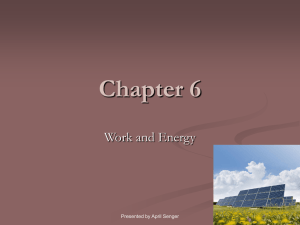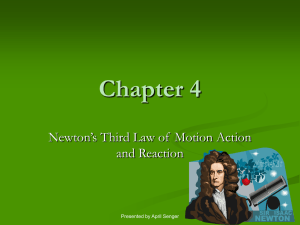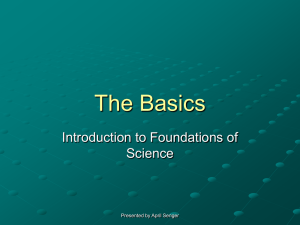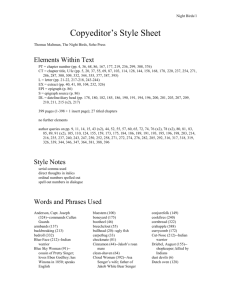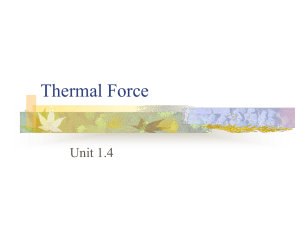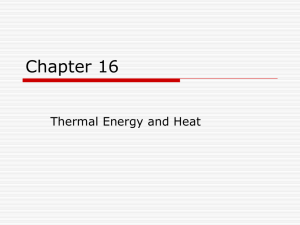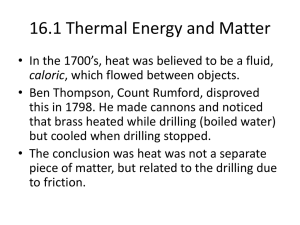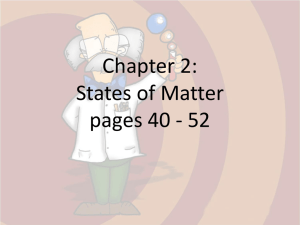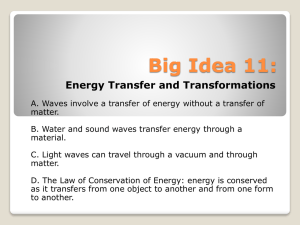Chapter 9 Power Point
advertisement
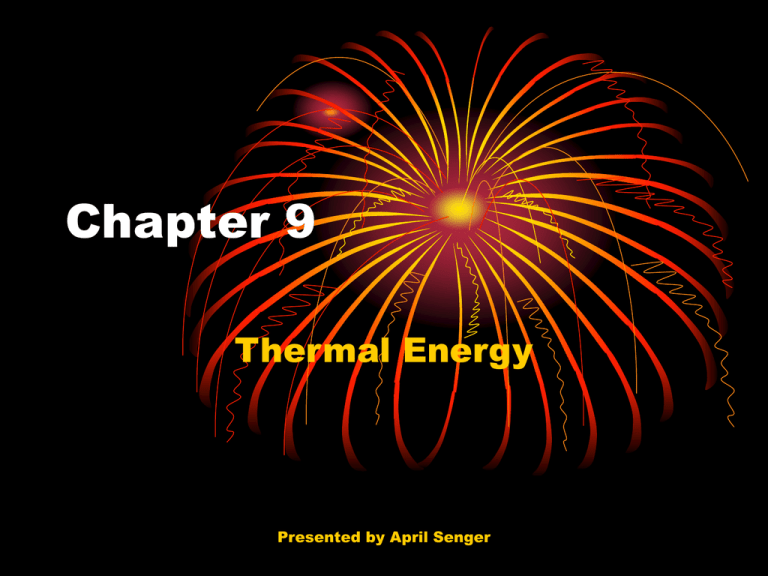
Chapter 9 Thermal Energy Presented by April Senger Thermal Energy • Thermal Energy in a substance is the total energy of all it atoms and molecules • It consists of both PE & KE of the particles in the substance • All particles are vibrating Presented by April Senger Temperature • To distinguish how warm or cold an object is we use temperature • The most common temp is measured in Celsius (0 freezing, 37 body temp & 100 boiling) • Fahrenheit is common in the US (32 freezing, 98.6 body, & 212 boiling) • Kelvin is the SI unit for measuring temp • Degrees C and F are not the same size • How does a thermometer work? • What does that have to do with KE? Presented by April Senger Concept Check • True or False… • Temperature is a measure of the total kinetic energy in a substance • False…it is the average temperature of the substance Presented by April Senger Absolute Zero • The lower limit of temperature is called absolute zero • This is the temp that theoretically all motion and vibrations would stop = no KE • -273 degrees Celsius is A. Zero • 0 K is also A. Zero • To convert C to K – Add 273 to the temperature in Celsius • This is because C and K have the same size of degree markings • Caution: we do not use the work degree with the Kelvin scale Presented by April Senger Hot Stuff! • Heat is the thermal energy transferred from one substance to another due to a temperature difference between the substances • Substance contain thermal energy NOT heat • Heat is thermal energy that is moving to another object • Thermal energy flows from higher temps to lower temps Presented by April Senger Cool It.. • If you step out of the pool on a 100 degree day, why do you feel cold? • If you feel cold, it is because your thermal energy is leaving your body • Corona of the sun example… Presented by April Senger Concept Check • Suppose you apply a flame to 1 L of water and its temperature rises by 3 degrees C. If you apply the same flame for the same length of time to 3 L of water, by how much will the temp rise? • 1 degree C • When you touch a cold surface, does cold travel from the surface to your hand or does the energy travel from your hand to the cold surface? • It travels from hot to cold. Your hand to the cold surface Presented by April Senger Thermal Expansion • Thermal expansion results from the molecules moving faster and apart in a warm substance • Where might some thing in our society expand or contract? • Bridges, railroads, buildings, dentists • The Law of Conservation of Mass says that matter cannot be created or destroyed • The Law of Conservation of Energy says that energy cannot be created or destroyed Presented by April Senger Concept Check • When you can’t loosen a metal lid on a glass jar, how can you use the concept of thermal expansion to rescue the situation? • Hold it under hot water to expand the lid faster than glass • A Concorde supersonic airplane is 20 cm longer when in flight than when parked on the ground. Why? • Traveling at the speed of sound creates great air friction and heat thus expansion Presented by April Senger What’s Up with Water? • Water does contract until it reaches about 4 degrees C • If forms a unique crystal shape that traps air between the molecules making it less dense • Below 4 degrees C, water begins to expand again • This is why ice floats • Why is it so important that ice floats on our lakes? Presented by April Senger Concept Check • What is the coldest water at the bottom of a frozen lake can be? • 4 degrees C because it is the most dense and will sink towards the rocks • Temps below 4 begin to expand and range up to 0 near the ice Presented by April Senger
